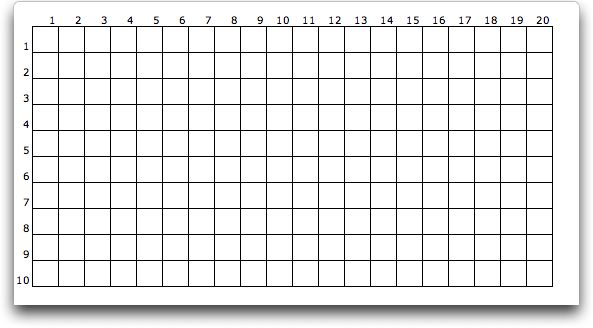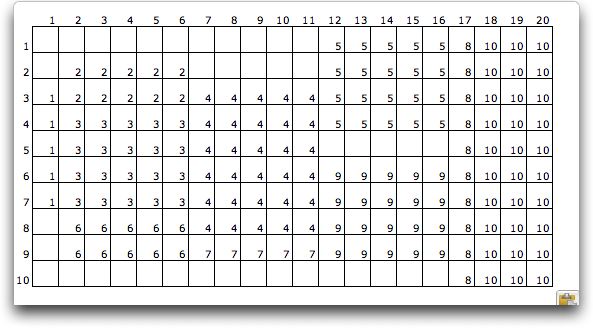| |
Similar
to the sequential method, the CRAFT method also investigates
departments for switching. Candidates for switching are pairs
of departments that have the same area or pairs of departments
that are adjacent in the layout. For example, consider the feasible
switches that involve department 6 in the layout above. Departments
2 and 8 have the same area, so the pairs (2, 6) and (6, 8) are
feasible. Departments that are adjacent to 6 are departments
3, 5, 7, 9 and 10, so the pairs involving these departments
and department 6 are feasible.
To evaluate the effect of switching the
two departments, the CRAFT method assumes that the centroids
of the two departments are switched and computes the resultant
cost savings. When the two departments are the same size, this
evaluation is accurate. When the departments have different
sizes, the centroids of the departments do not exactly switch
locations. In this case the evaluation may be not be accurate
and a switch that looks promising may actually increase the
cost of the layout. The CRAFT method implemented by this add-in
terminates if this occurs.
For the example, the best feasible pair
is 9 and 10. Since the two departments are different sizes,
there are many alternatives for arranging the cells of the smaller
sized department 9 into the larger area formerly holding department
10. The program has an algorithm for choosing the arrangement
that results in the layout below. Although one might question
the logic of this arrangement, it is difficult to program an
algorithm that always makes the most reasonable assignment.
The user can adjust the assignment of cells by changing cell
indices, but this is a manual operation. |
| |
The next iteration
interchanges departments 2 and 5. Note that this change causes
department 5 to overlap two widths of the formerly sequential
layout. Although we started with a sequential layout, the CRAFT
method does not consider department widths in its algorithms.
We have erased the lines representing aisles, because no aisles are implied by the CRAFT layout. |
| |
The
program next determines that if the centroids of departments
7 and 8 are switched, the cost of the layout will be reduced.
When the switch is actually made, the cost increases. The add-in
recovers the solution before the switch and terminates. The
summary of the CRAFT process is shown below. |
| |
The
CRAFT method is not restricted to initial layouts obtained
by the sequential method. By choosing Blank on
the dialog, a blank layout is presented.

An initial layout is constructed by placing numbers or colors
on the layout. One possible initial layout is below.

The blank spaces might represent the
actual building shape or unusable portions of the facility. Pressing
the Evaluate button,
colors the cells and evaluates the layout. |



